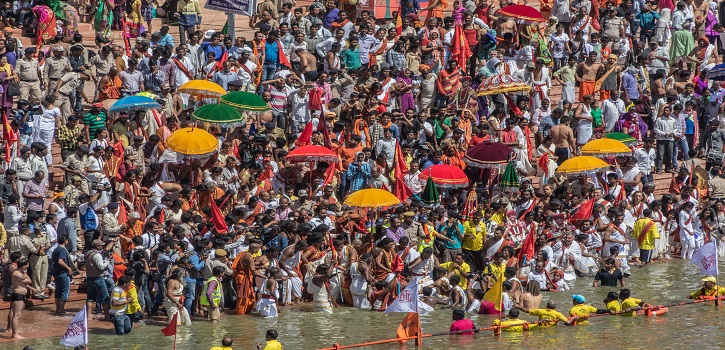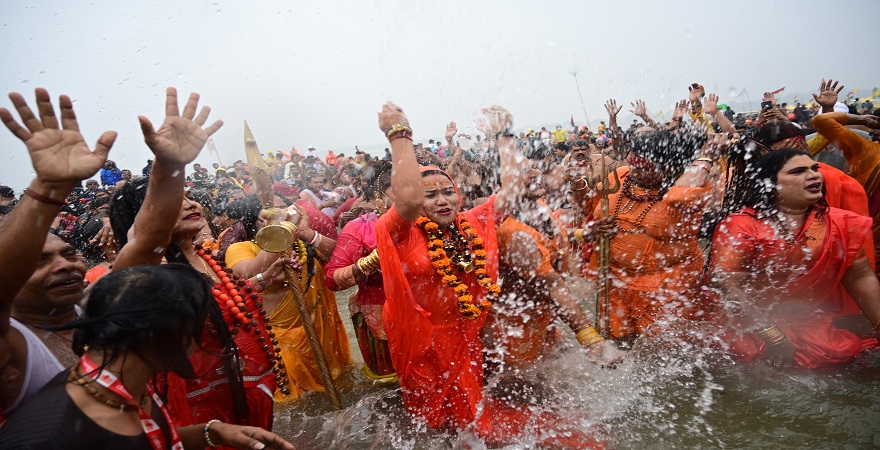The Maha Kumbh Mela, a monumental spiritual event, is currently being held in Prayagraj, Uttar Pradesh, from January 14 to February 26, 2025. This gathering not only serves as a pivotal religious occasion for millions but also as a vibrant cultural event that garners global attention. Here are ten intriguing facts about the Maha Kumbh Mela 2025:
1. The Largest Religious Gathering
The Maha Kumbh Mela is recognized as the world's largest religious event, with an astounding over 400 million pilgrims expected to attend this year. This turnout highlights its significance in the spiritual calendar of Hindus globally.
2. Sacred Confluence
The event takes place at the TriveniSangam, where the Ganga, Yamuna, and the mythical Saraswati rivers meet. This site is revered for its spiritual importance, believed to cleanse sins and grant moksha (liberation) to devotees who bathe in its waters.
3. Historical Significance

Occurring every 12 years, the Maha Kumbh Mela is a highly anticipated event within Hindu culture. The festival spans 44 days in 2025, emphasizing its role as a time for spiritual renewal and communal gathering.
4. Record Attendance
The current Mela has already seen record-breaking attendance, with 15 million devotees taking a holy dip on the first day and approximately 35 million on the second day alone. This trend indicates that attendance may surpass previous records set in past events.
5. Advanced Security Measures
To ensure safety, over 40,000 police personnel and more than 3,000 CCTV cameras have been deployed across the venue. A comprehensive security strategy is in place to manage the large crowds effectively and maintain order.
6. Cultural Vibrancy
In addition to spiritual rituals, the Maha Kumbh Mela features a plethora of cultural activities such as pravachans (spiritual discourses), folk performances, and mythological dramatizations. These activities enrich the festive atmosphere and engage both pilgrims and visitors alike.
7. Environmental Initiatives
The Mela has embraced eco-friendly practices including robust waste management systems and a ban on plastics. These initiatives aim to promote sustainable tourism and ensure cleanliness throughout the event.
8. Economic Impact
The government has allocated an estimated budget of ₹7,500 crores (approximately $903 million) for infrastructure improvements related to the Mela. It is projected that the event will generate an economic impact of around ₹2 lakh crore (approximately $25 billion), significantly contributing to India's GDP.
9. Global Recognition

In 2017, UNESCO recognized the Maha Kumbh Mela as part of its Representative List of Intangible Cultural Heritage of Humanity, underscoring its global significance and cultural value beyond India.
10. A Unique Experience
The Maha Kumbh Mela represents a unique blend of spirituality, culture, and community engagement. It attracts not only Indian pilgrims but also international visitors eager to experience this extraordinary event first-hand—making it a true global confluence of faiths and traditions.
Conclusion
The Maha Kumbh Mela 2025 is more than just a religious gathering; it embodies a vibrant tapestry of culture, spirituality, and community that showcases India's rich heritage. With its immense scale, historical significance, and global recognition, this gathering serves as a powerful reminder of humanity's enduring quest for connection and transcendence. As pilgrims from diverse backgrounds converge at the sacred confluence of the Ganga, Yamuna, and Saraswati rivers, they partake in an unparalleled experience that celebrates faith, unity, and the spirit of humanity.


